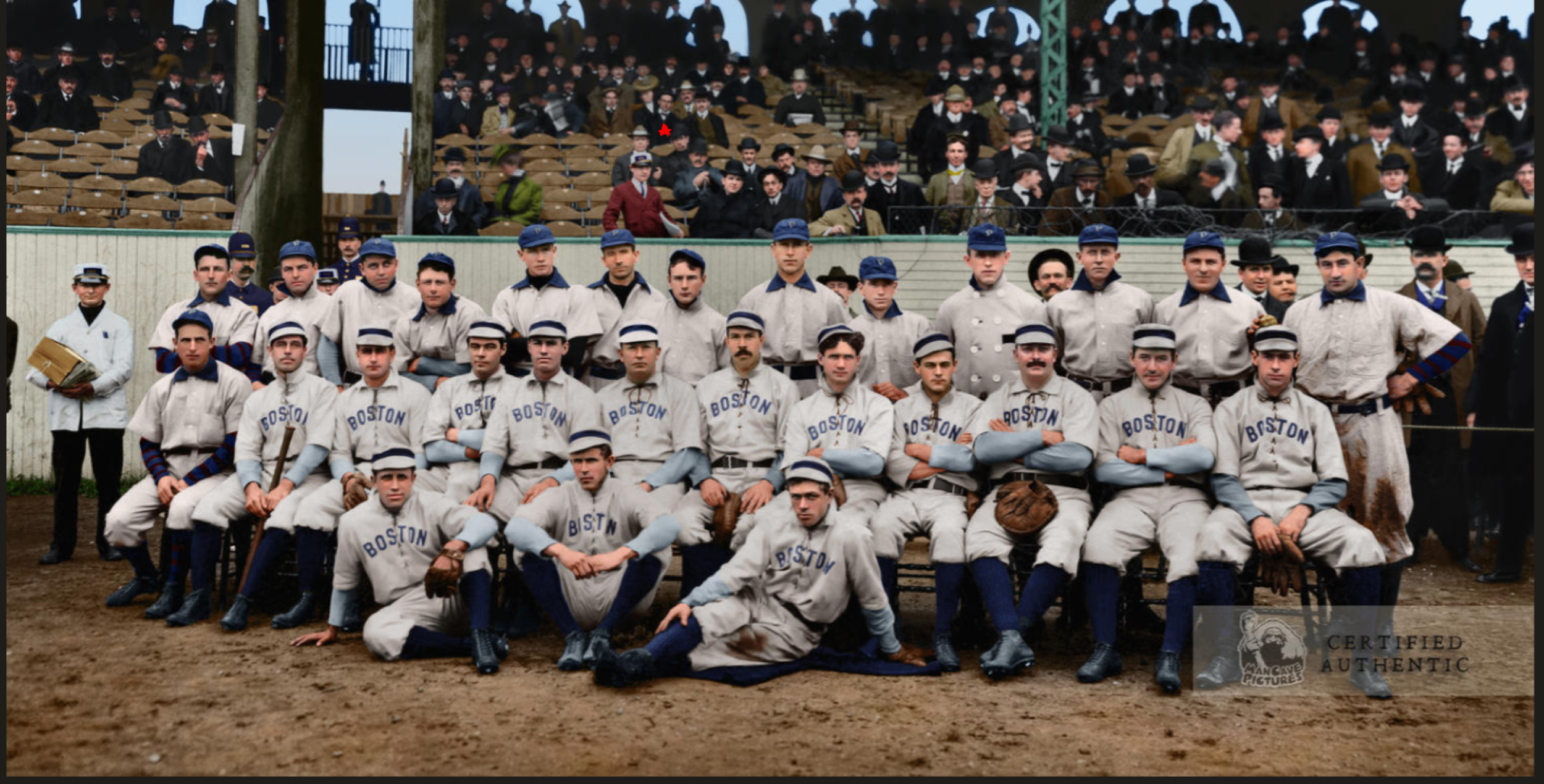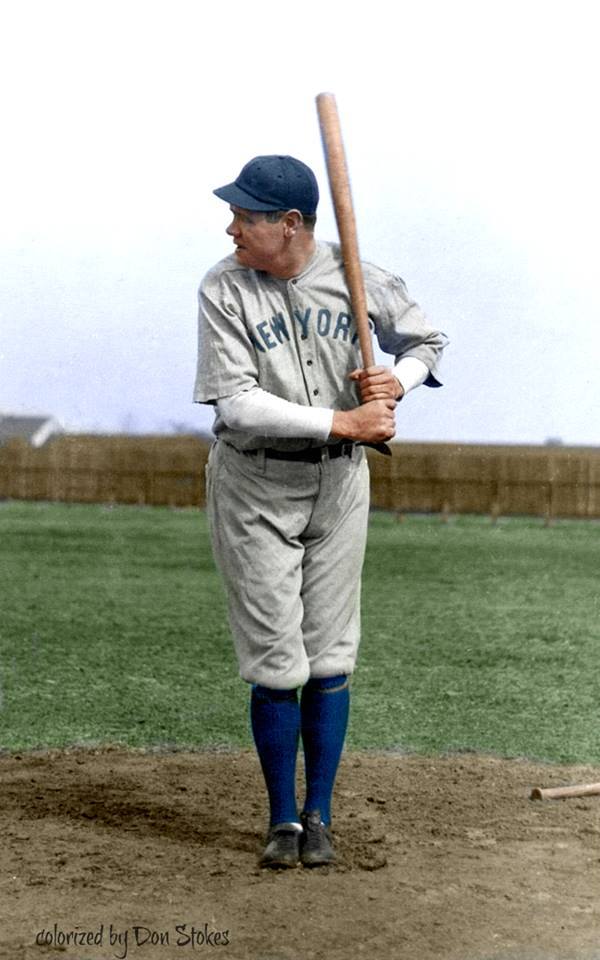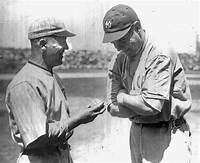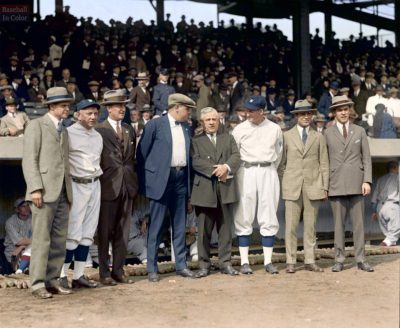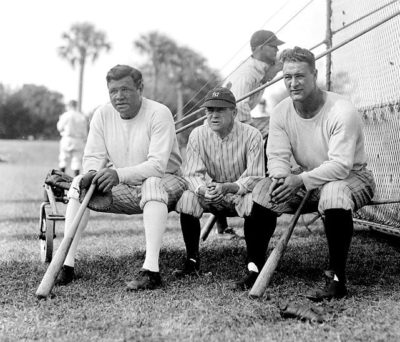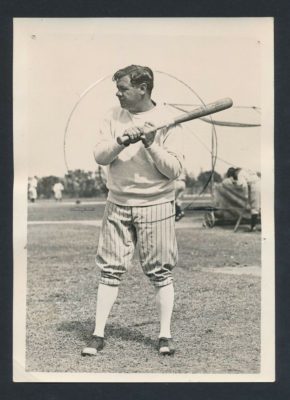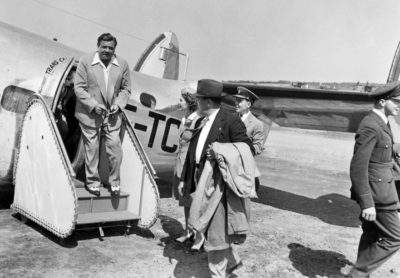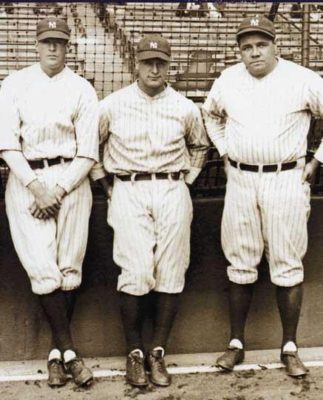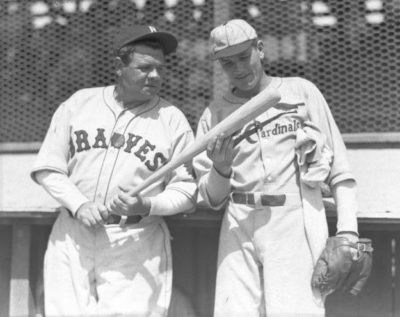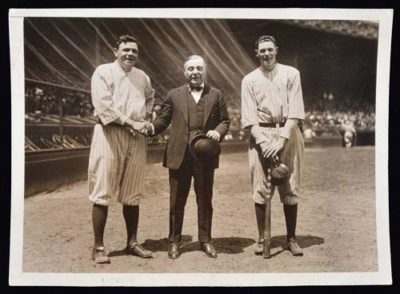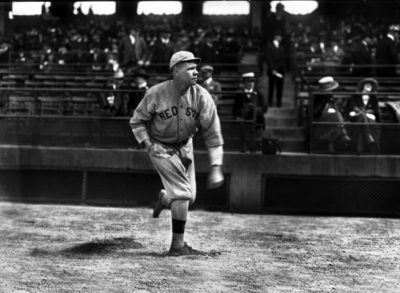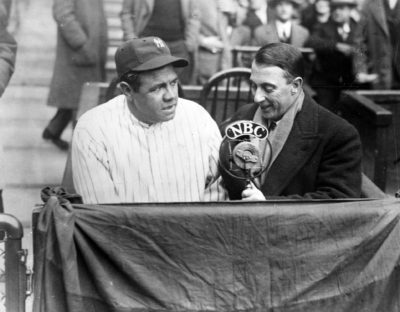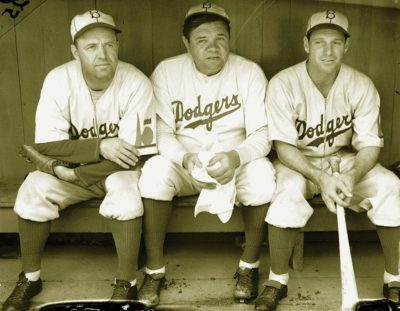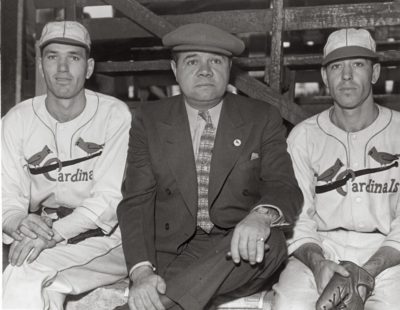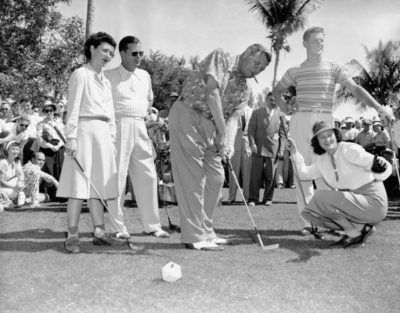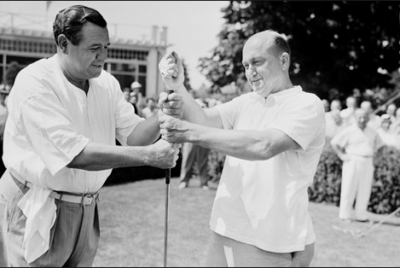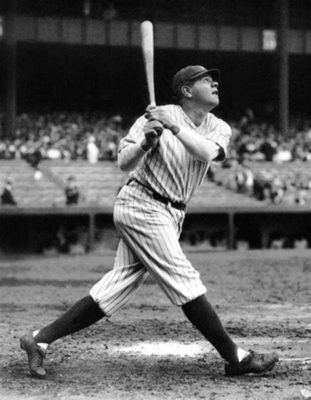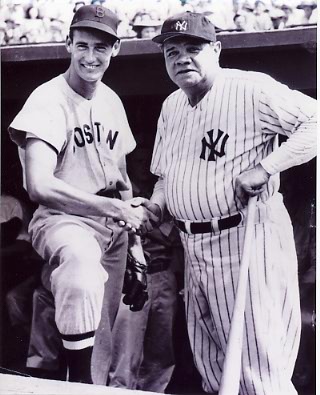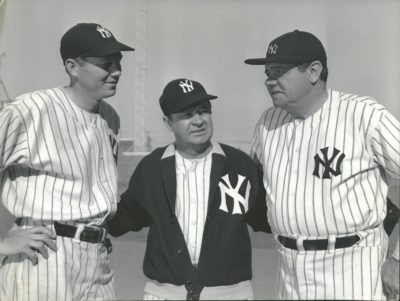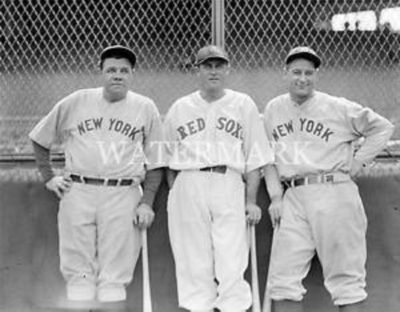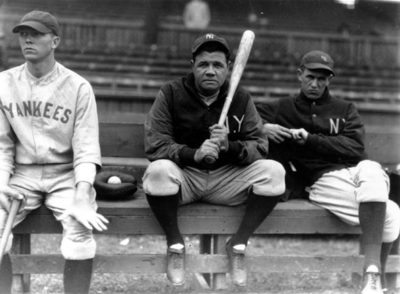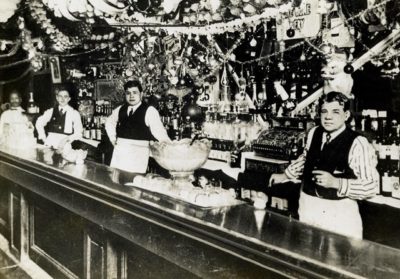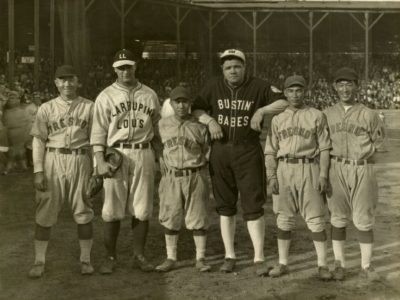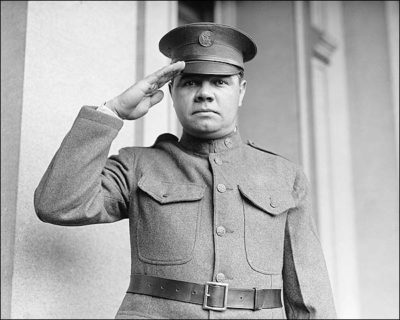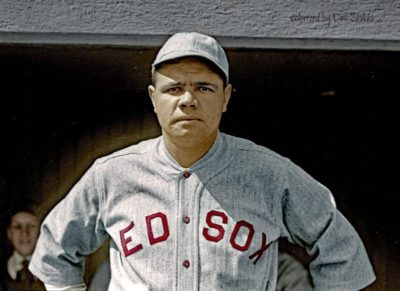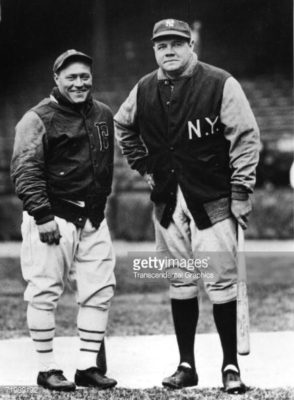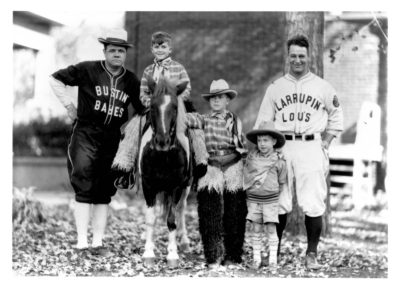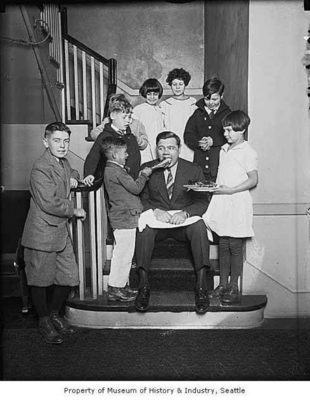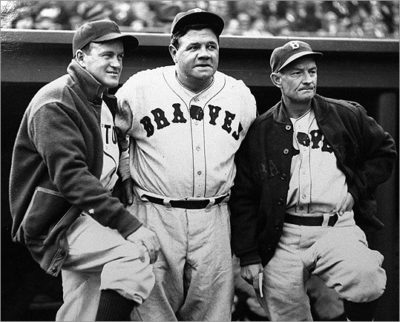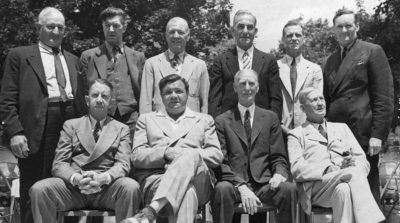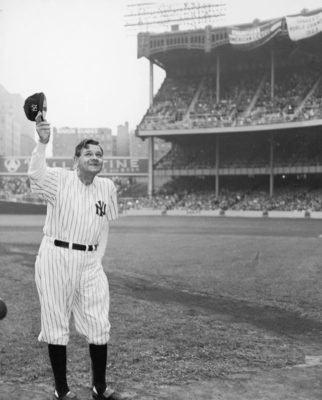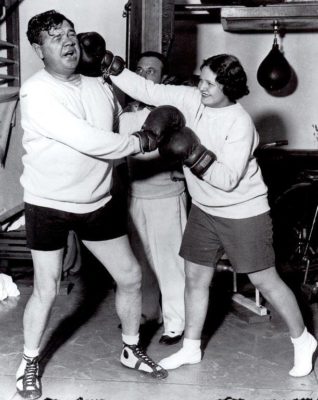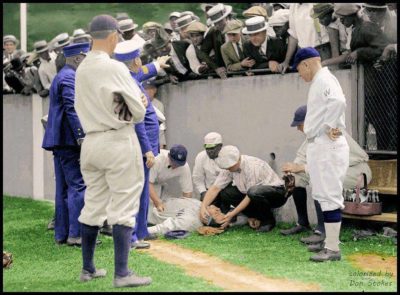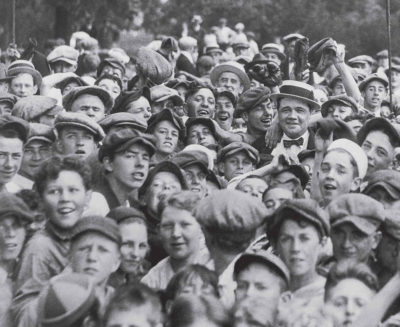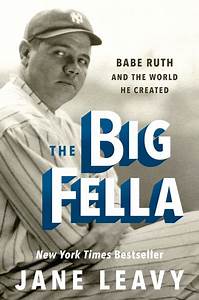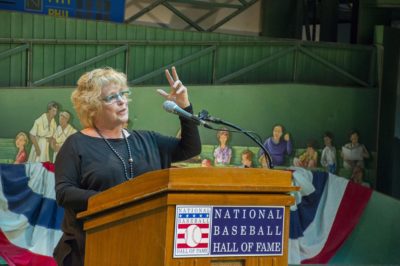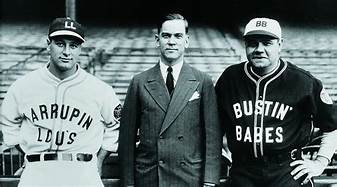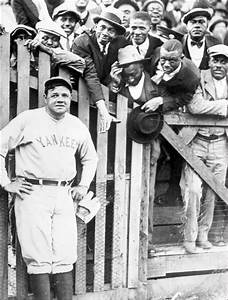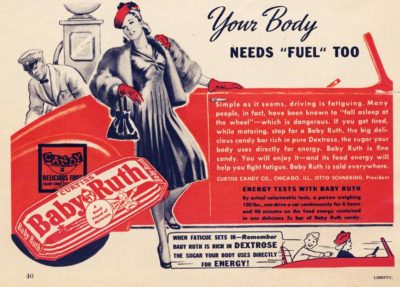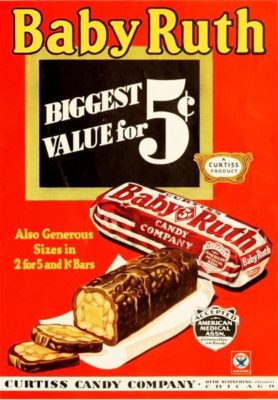Featured Photo Above:
Combined 1903 World Series Photo: Pittsburgh Pirates and Boston Pilgrims
(Color Restoration by Chris Whitehouse of Mancave Pictures)
Baseball History Comes Alive Now Ranked As a Top Five Website by Feedspot Among All Baseball History Websites and Blogs!
(Check out Feedspot's list of the Top 35 Baseball History websites and blogs)

Guest Submissions from Our Readers Always Welcome! Click for details
Subscribe to Old Baseball Photos and Essays for automatic updates (sign-up block found in right side-bar)
As a Free Bonus for subscribing, you’ll get instant access to my two Special Reports: Memorable World Series Moments and Gary’s Handy Dandy World Series Reference Guide!
Babe Ruth Photo Gallery
Click on any image below to see photos in full size and to start Photo Gallery:
The Sad Saga of Babe Ruth and the Baby Ruth Candy Bar
“Well, I ain’t eatin’ your damned candy bar anymore!” —Babe Ruth, 1927
…And after you read the story, who could blame him?
I’ve just finished reading the wonderful new book on Babe Ruth, The Big Fella, by Jane Leavy. In case you’re thinking: What else can there be said about Babe Ruth that hasn’t already been said? To which I answer: Plenty! Ms. Leavy has done exhaustive research and has uncovered lots of new information. The overall theme is aptly summarized in the subtitle: “Babe Ruth and the World He Created.”
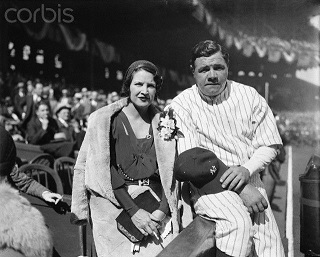
Ms. Leavy assumes we all know Babe was a great player, arguably the greatest ever. With 714 home runs, 2214 RBIs, .474 on-base percentage, .690 slugging average, 1.164 OPS (the last two categories, the highest ever), there’s no need to convince us of that. But what she uniquely does in The Big Fella is describe the America into which George Herman Ruth was born on February 6, 1895; and then brilliantly crafts the impact he had on that society, while detailing the transformation that occurred by the time he left it 53 years later, on August 15, 1948. And trust me, it was a dramatic transformation.
The book covers many interesting topics. A small sampling includes: Details about his early life with his biological family (which was, by the way, much more dysfunctional than I had imagined); his life at St. Mary’s Industrial School, and the role played by Brother Matthias (with a surprising twist to Brother Matt’s life in his later years); his first marriage to Helen Woodford; his up-and-down relationship with Lou Gehrig, with extensive coverage of their barnstorming tours; his second marriage to Claire Hodgson and the family he craved and finally created; the role played by the innovative Christy Walsh in all aspects of Babe’s life – most importantly in protecting the Babe’s image – and his genius for successfully monetizing the Babe’s celebrity; and the enormous, immeasurable love the Babe evoked from across the entire spectrum of American society, most especially from kids.
There had never been a celebrity with the massive appeal of Babe Ruth. The enormity of his impact is hard for us to conceptualize from our distant 2019 perspective. It’s a theme skillfully developed by Ms. Leavy. Remember also the Bambino was way ahead of the patent laws and the rights of celebrity, all taken for granted today. The country had never before seen his “like”…and may never again:
“Ruth was famous in a way that no-one had ever been famous before. Famous in a way the law had never envisioned…In short, Ruth was penalized for his originality. It would take thirty years for jurisprudence to catch up with him…”
“As much as Ruth made by exploiting his name and image, what was truly noteworthy was how much others made off him. Enterprising businessmen, with deep pockets and good lawyers, appropriated his name, betting he’d never find out about it or knowing there was nothing legally he could do about it. Bambino Pinto Beans form Mingo, Kansas? Big Hit Babe Ruth candy from Oconto, Wisconsin? Who’d ever heard of those?”
But, as Ms. Leavy relates, “Nothing was as infuriating as the case of the Baby Ruth candy bar.”
How many of us have heard the cock-a-nanny story that the Baby Ruth candy bar was named after President Cleveland’s daughter, Ruth? That was the “official” version, cleverly, but deceitfully, concocted by Curtiss Candy founder, Otto Schnering. It was a version that effectively cut Babe and his descendants out of millions of dollars of royalties.
Jane Leavy does her best to sort out the confusing details. Suffice it to say that the Curtiss Candy Company, and subsequent owners and subsidiaries, made millions from the Baby Ruth candy bar. The Babe’s cut? As Ms. Leavy so succinctly put it:
“The product with which he is most identified is also the one from which he never earned a nickel…”
Just how big did the Baby Ruth candy bar become, the candy bar that shamelessly exploited his name, while claiming it was only a coincidence that everyone in the country identified it with Babe Ruth? Try this on for size: Over one million dollars in sales each month by 1927. At one point Curtiss Candy had over 200 dedicated freight cars distributing the annual production of one billion Baby Ruth candy bars across the country. As Ms. Leavy relates:
“Most everyone in the country – from radio disc jockeys to stock boys to baseball fans mailing Baby Ruth wrappers to the Babe for his signature to Ruth’s own golf caddy – accepted as fact that the “Ruth” in question was him…Everyone but Schnering, who maintained in contravention of logic and public belief that his candy bar was named for Baby Ruth Cleveland, the long-dead daughter of President Grover Cleveland who succumbed to diphtheria at the age of twelve in 1904 – fifteen years before the first Baby Ruth bar appeared on the American store shelves…”
“In 1919, just as Babe Ruth was giving Boston an intimation of the fullness of his powers, Otto Schnering reformulated the former Kandy Kake into the Baby Ruth and began telling poignant tales of Baby Ruth Cleveland’s visit to the factory that manufactured the bar in her honor – a convenient transposition of time and place for marketing purposes that would have required the reincarnation of the president’s daughter. “
Years later – and after many millions of dollars in sales revenue generated for the Curtiss Candy Company – Schnering let the “cat out of the bag,” blithely admitting in Chicago Topics magazine that the brainstorm for the candy bar came to him while attending a baseball game. Babe’s ever-vigilant agent, Christy Walsh – successful in just about everything else he did for Babe – had met his match in Otto Schnering; and after years of failed litigation, finally gave up. The laws that existed at the time just weren’t on the Babe’s side.
Don’t feel too sorry for the Babe. Under Walsh’s guidance, he capitalized on his name and public image to a degree never before seen. As his home run prowess grew, his name became magic for sales. It seemed like everyone wanted a piece of the Babe, and was willing to pay for it.
In 1927, it was calculated that he earned the equivalent of $26 million in today’s purchasing power. Walsh had transformed him into America’s first successful pitch man. The extensive list of the products he endorsed – and the lucrative deals he signed on to over his years in the public eye, all arranged by Walsh – is staggering, to say the least.
Meanwhile, from the Baby Ruth candy bar – owned at first by the Curtiss Candy Company, and then in succession by Standard Brands, Nabisco, and Nestle – not a nickel came his way. In 2018 Nestle USA quit the candy business, selling off all its sweets, including Baby Ruth, to the European food conglomerate Ferrero – for a cool $2.8 billion in cash.
All this and much more is detailed in Jane Leavy’s new book, The Big Fella. It’s a book I recommend to all baseball fans, especially those of us who can never get enough of the great Bambino, Babe Ruth.
Gary Livacari
Photo Credits: Featured photo colorization (and other coloriations) of Babe Ruth beautifully done by our resident baseball artist, Don Stokes; All others from Google search
Information: Quotes from The Big Fella, by Jane Leavy
Check out my two books, both now available on Amazon in e-book and paperback: “Paul Pryor in His Own Words: The Life and TImes of a 20-Year Major League Umpire”and “Memorable World Series Moments.” All profits go to the Illinois Veterans Foundation
Cast Your Vote in Our New Poll Question: How Do You Feel About Judge Landis’ Verdict Against the “Eight Men Out”? Let Your Voice Be Heard! https://wp.me/p7a04E-5IF
We are a participant in the Amazon Services LLC Associates Program, an affiliate advertising program designed to provide a means for us to earn fees by linking to Amazon.com and affiliated sites. Click here to view Amazon’s privacy policy
